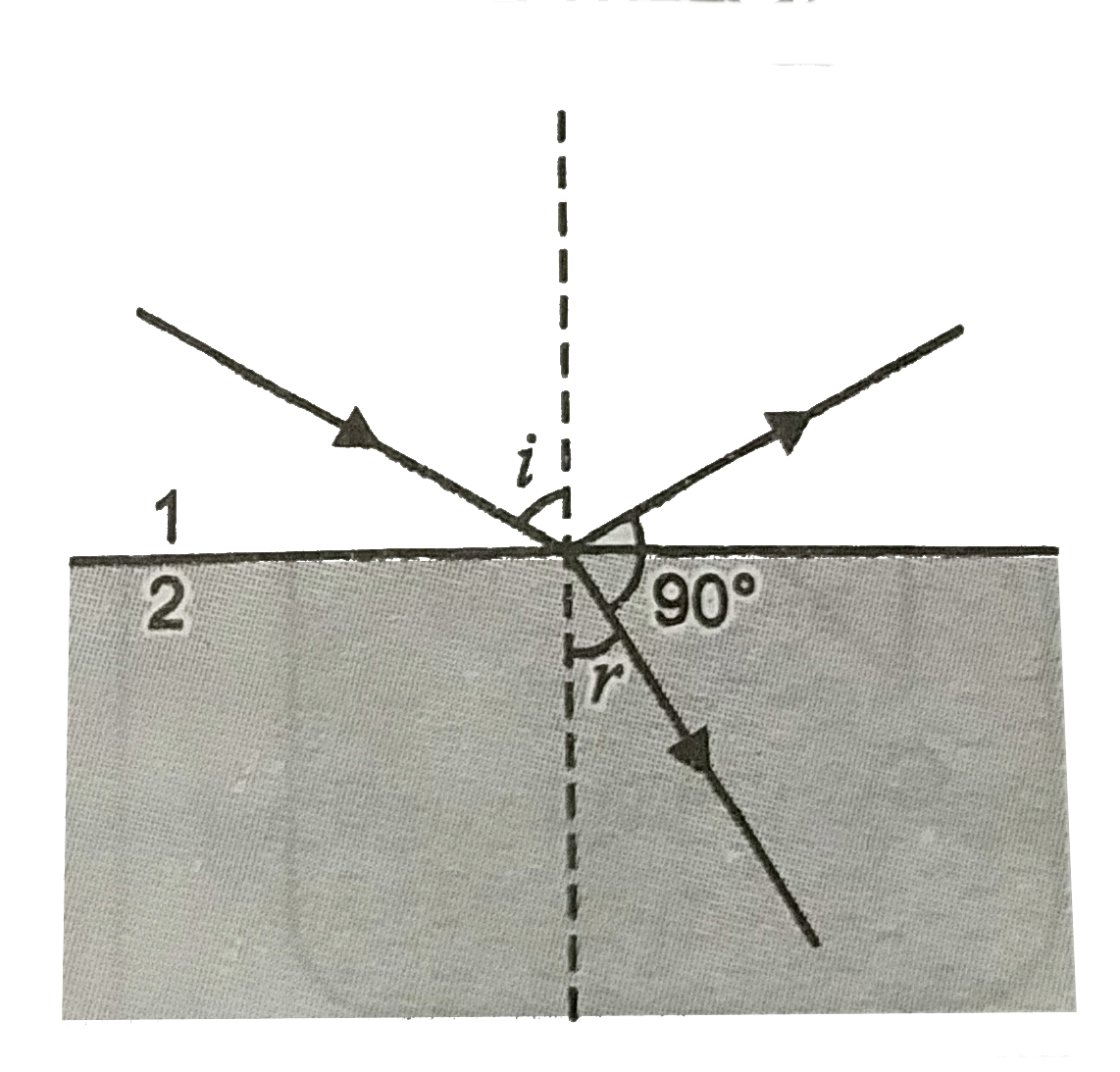(a) When monochromatic light is incident on a surface separating two media, the reflected and refracted light both have the same frequency as the incident frequency. Explain why ?
(b) When light travels from a rarer to a denser medium, the speed decreases. Does the reduction in speed imply a reduction in the energy carried by the light wave?
c) In the wave picture of light, intensity of light is determined by the square of the amplitude of the wave. What determines the intensity of light in the photon picture of light.
Reflection and refraction arise through interaction of incident light with the atomic constituents of matter. Atoms may be viewed as oscillators, which take up the frequency of the external agency (light) causing forced oscillations. The frequency of light emitted by a charged oscillator equals its frequency of oscillation. Thus, the frequency of scattered light equals the frequency of incident light.
(b) No. Energy carried by a wave depends on the amplitude of the wave, not on the speed of wave propagation.
(c) For a given frequency, intensity of light in the photon picture is determined by the number of photons crossing an unit area per unit time.
Topper's Solved these Questions
Similar Questions
When monochromatic light is incident on a surface separating two media, the reflected and refracted light both have the same frequecy as the incident frequecy. Explain why ?
View Solution(a) When monochromatic light is incident on a surface separating two media, the reflected and refracted ligth both have the same frequency as the incident frequency. Explain why ?
(b) When light travels from a rarer to a denser medium, it loses speed. Does the reduction in speed imply a reduction in energy carried by the light wave ?
( c) In the wave picture of light, intensity of ligth is determined by the square of amplitude of wave. What determines the intensity of light in teh photon picture of light ? (NCERT Solved Example)View Solution
Knowledge Check
- Question 1 - Select One
Assertion : When monochromatic light is incident on a surface separting two media, the reflected and refracted light both have the same frequency as the incident frequency.
Reason: The frequency of monochromatic light depends on media.AIf both assertion and reason are true and\ reason is a correct explanation of the assertionBIf both assertion and reason are true but the reason is not a correct explanation of assertion.CIf assertion is true but reason is false.DIf assertion is false but reason is true - Question 2 - Select One
When light travels from a rarer medium to a denser medium, it ________
Aspeed remains the sameBspeeds down then upCspeeds downDspeeds up - Question 3 - Select One
Assertion: When a light wave travels from a rarer to a denser medium, it loses speed. The reduction in speed imply a reduction in energy carried by the light wave.
Reason: The energy of a wave is proportional to velocity of wave.A(a) If both assertion and reason are true and reason is the correct explanation of assertion.B(b) If both assertion and reason are true but reason is not the correct explanation of assertion.C(c) If assertion is true but reason is false.D(d) If assertion and reason both are false.
In the wave picture of light, intensity of light is determined by square of the amplitude of wave. What determines the intensity of light in the photon picture of light?
View SolutionWhen light travels from a rares to a denser medium, the speed of light decreases. Does the reduction in speed imply a reduction in the energy ?
View SolutionWhen light travels from a rarer to denser medium, it loses some speed. Does the reduction in speed imply a reduction in the energy carried by the light wave ?
View SolutionWhen light travels from a rarer to a denser medium, the speed decreases. Does this decrease in speed imply a decrease in the energy carried by the light wave ? Justify your answer.
View SolutionLight incident on a surface separating two media is partly reflected and party refracted as shown in Fig. Then :
 .View Solution
.View Solution

